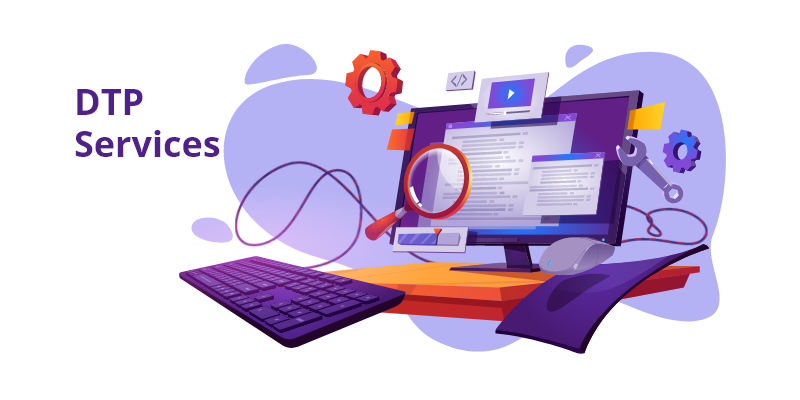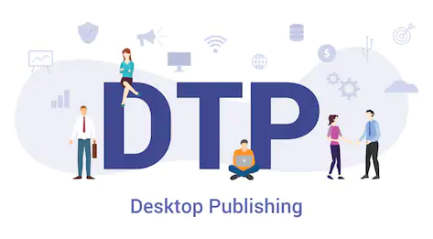
Desktop Publishing (DTP) :
Is the creation of documents using page layout software on a personal ("desktop") computer. It was first used almost exclusively for print publications, but now it also assists in the creation of various forms of online content. [1] Desktop publishing software can generate layouts and produce typographic-quality text and images comparable to traditional typography and printing. Desktop publishing is also the main reference for digital typography. This technology allows individuals, businesses, and other organizations to self-publish a wide variety of content, from menus to magazines to books, without the expense of commercial printing
Requires Of Desktop Publishing:
A personal computer and WYSIWYG page layout software to create documents for either large-scale publishing or small-scale local multifunction peripheral output and distribution – although a non-WYSIWYG system such as LaTeX could also be used for the creation of highly structured and technically demanding documents as well.


Desktop Publishing Methods:
More control over design, layout, and typography than word processing. However, word processing software has evolved to include most, if not all, capabilities previously available only with professional printing or desktop publishing. The same DTP skills and software used for common paper and book publishing are sometimes used to create graphics for point of sale displays, presentations, infographics, brochures, business cards, promotional items, trade show exhibits, retail package designs and outdoor signs. Although what is classified as "DTP software" is usually limited to print and PDF publications, DTP isn't limited to print. The content produced by desktop publishers may also be exported and used for electronic media. The job descriptions that include "DTP," such as DTP artist, often require skills using software for producing e-books, web content, and web pages, which may involve web design or user interface design for any graphical user interface.
When Does Your Translation Project Require DTP ?
If you need to translate a document, booklet, manual or any other type of document with images or a preset layout, you will need to use DTP services to reconstruct it according to the target language layout. When you deliver a document that has a formatted layout, that layout will be damaged if the translation is simply pasted back. This is because translated text expands (sentence length often increases). To preserve your document’s original layout and formatting, DTP work is required to correctly insert the translation back into your document, adjusting the layout accordingly. For example, Arabic is a bidirectional language, as is Farsi, Urdu and Hebrew, and therefore requires special handling because the text usually originates in a Latin alphabet source document. This is where our role becomes crucial, by helping to flip the layout of the whole document, not an easy task for less-experienced vendors or even nonnatives. In short, when you need to flip a layout, our DTP services are there to help.

